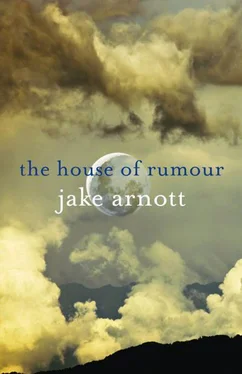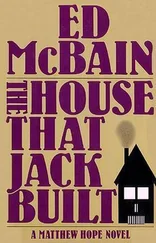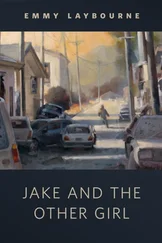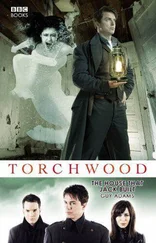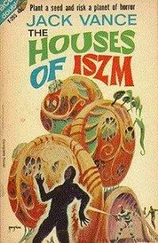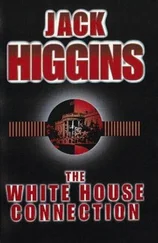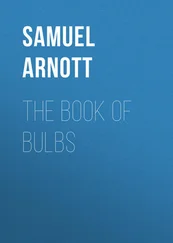You’re flying? I asked her and her absent smile gave me the courage to carry on asking stupid questions. You want to fly? To be a pilot?
Well, she replied nonchalantly, I’ll have to do that first.
First? I retorted.
If I want to become a cosmonaut of course, she declared, turning to me with those magnificently frightening eyebrows. I’m going to be the first Latin-American woman in space.
It had been the year before, in 1980, that Arnaldo Tamayo Méndez, our first cosmonaut, had blasted off from Baikonur Cosmodrome and spent eight days orbiting the earth. Not only the first Cuban in space but the first from any country in the Western Hemisphere other than the United States, and the first cosmonaut of African descent. A street kid orphaned at thirteen, who had worked as a shoeshine before the Triumph of the Revolution had given him an education and trained him as a pilot, Arnaldo Tamayo Méndez was living proof that almost anything was possible under socialism. We have gone from fiction, announced Fidel Castro, our Maximum Leader, in his celebratory address, because space flights were fiction when many of us who are not so old now were still children.
It was a brave kid who openly challenged Lydia’s ambition, but, even so, she had learnt to detect doubt on the faces in the schoolyard. I decided that it was my mission to have absolute belief in her aspirations, to be ground control to her soaring dreams. And with my encouragement she confided in me. Her plan was to be a straight-A student in science and sport. She would take a degree in physics at the University of Havana, train as a pilot with the Cuban Air Force Academy, then apply to join the Intercosmos Programme at Star City in the Soviet Union. She would have to be a good communist too, of course. My first gesture was to make her a model of the Soyuz 38 that had taken Méndez up beyond the stratosphere. It looked like a huge insect: a spheroid module head with a docking proboscis, cylindrical body and filmy solar panel wings. She took me under her wing, me, the geekiest kid in the class. We constructed balsa-wood gliders and launched home-made rockets. I was entranced by her adventurous obsession with flight and followed doggedly when she suggested that we go investigate the Space-Man.
The Space-Man was one of those legends that gets passed around by kids in any neighbourhood. There were many stories about the eccentric Nemo Carvajal who lived in a run-down Art-Deco house on the corner of Ninth Avenue and Calle 19, the most absurd and intriguing being that he had come from another planet. Lydia and I dared each other to take a closer look at this alien’s habitat, a decrepit shell with its strange curves and ziggurats styled in the 1920s version of the future, a relic of ancient modernism that indeed had the air of a fossilised spacecraft. Through a partly taped-up window we spied his study by the dim glow of bare neon strip lights. Posters of American science-fiction films and lithographs of mystical symbols lined the walls. There was a desk cluttered with papers and arcane electrical equipment, a bookshelf crammed with gaudy paperbacks and, hanging from the ceiling, a silver model of a flying saucer.
Where’s the Space-Man? whispered Lydia.
Here’s the Space-Man, came a soft voice behind us.
We turned and there he was. Tall and thin in a Hawaiian shirt, long grey hair swept back in a ponytail, a gaunt face framed by a goatee beard and green bug-eyed sunglasses. I shrieked the loudest and moved the slowest, and the Space-Man grabbed me by the arm.
What do you want? he demanded, his voice still soft, calm.
With my free arm I pointed at Lydia. She, I began, implicating my companion with a combination of cowardice and ingenuity, she wants to be a cosmonaut.
The Space-Man’s laugh was a deep rumble. So, he went on, so you want to find out how it’s done? He let go of me and started up the front steps. He turned and gave us a casual cock of the head. Come on then.
Nemo Carvajal was a writer of speculative fiction whose work had mostly been banned since the mid-sixties. He had finally been expelled from the Cuban Fantasy and Science-Fiction Union after he distributed a story titled ‘The Hive’ in 1971. Featuring ant-like visitors from another planet addicted to sugar for which they trade for an energy source, it was seen as a vulgar satire both on our Soviet allies and on our economic dependence on them. In his defence Nemo Cavajal insisted that earth had been visited by aliens and claimed to have seen evidence of it himself. He told us that he had often spotted UFOs hovering over the Florida Straits.
It could be the launches from Cape Canaveral, Lydia suggested, re-entry flare from discarded rocket stages. Nemo Carvajal smiled and nodded, obviously happy to have a guest so knowledgeable on space exploration. But he urged us to consider the importance of finding out about extraterrestrial activity, and would do so again during the further visits we made to his house. We soon learnt that he had once been a member of the Revolutionary Workers Party, a Trotskyist group that followed the teachings of the charismatic Argentinean, Juan Posadas. Central to the doctrine of Posadas was the necessity of making contact with UFOs. If such things exist, it was argued, they must be piloted by socialists since only the most advanced form of society would be capable of interstellar flight. These beings should be called upon to intervene and assist in building a world revolution, Nemo Carvajal declared. I was captivated by such cosmic imaginings but Lydia grew cautious. The Posadists were a prohibited organisation, denounced by the Maximum Leader at the Tricontinental Congress of 1966 as a pestilential influence. Lydia had joined the Union of Communist Youth and hoped to be accepted by the Young Pioneers Air Cadet Force. She didn’t want any association with subversive elements to get in the way of her application. Eventually I went to see Nemo Carvajal on my own.
Counter-revolutionary? he retorted indignantly when I explained the reason for my solitary presence. They tell her that I’m a counter-revolutionary? The Revolutionary Workers Party called for an attack on Guantánamo, to get rid of the Yankees for good! He shrugged and bemoaned how the Stalinists had betrayed the Revolution. I don’t think he ever felt betrayed by Lydia, though. He continued to enquire after her, curious about her ambitions for space travel. And she would ask after the Space-Man too, on the now much less regular occasions that I would see her.
So it was Nemo Carvajal who inspired in me the determination to become an artist. Without him I might still have come across this perfect alibi for my unsociable obsession, but he certainly gave it form. Artists and cosmonauts, he insisted, both seek to conquer deep space. He sought to tutor me, finding Spanish translations of the classic science fiction of H.G. Wells and Arthur C. Clarke, and citing the work of Alejo Carpentier and Jorge Luis Borges as proof that fantasy was at the heart of the Latin-American literary tradition. But the imagination is the biggest threat to the state, he told me. The state wants a monopoly on utopia; it cannot accept any competition in creating new worlds. And it demands an earthbound idealism. He quoted Carpentier at me: by creating the marvellous at all costs, the thaumaturgists become bureaucrats.
Thaumaturgists? I asked, not knowing the word.
Magicians, he replied.
You believe in magic? I demanded incredulously.
No more than I believe in realism, he declared with a sigh.
But it was clear that it would be the plastic arts, not literature, that would be the discipline I would follow. I had already shown great interest in the silver model that hung from his ceiling, a trophy of a flying saucer film he had worked on when he had lived in California in the forties and fifties. And when I told him about the moment I had looked at the Havana Marqueta and imagined a model within the model, he nodded sagely and went to his bookshelf. The abyss, he muttered, yes, yes, the abyss. He found a passage in an essay by Borges titled Partial Magic in the Quixote that made reference to the mapmaker Josiah Royce, and he read it out to me. I remember the vertiginous sense of recursion, of continuous regression, of echoes as he spoke, quoting a writer quoting another writer, and so on. Let us imagine that a portion of England has been levelled off perfectly, he droned. And on it a cartographer traces a map of England. The job is perfect: there is no detail of the soil of England, no matter how minute, that is not registered on the map; everything has there its correspondence. This map, in such a case, should contain a map of the map, which should contain the map of the map, and so on to infinity.
Читать дальше
